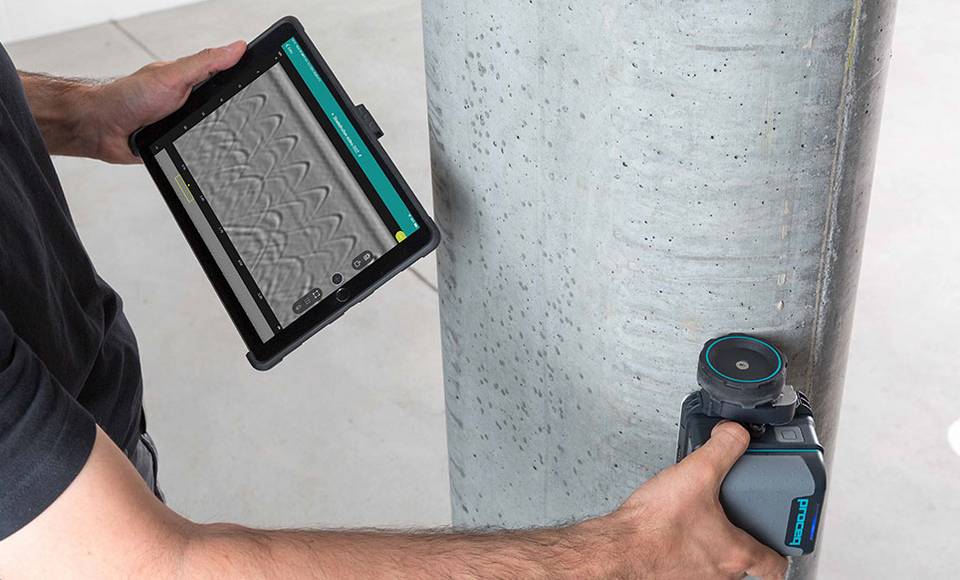Precision in Construction with Concrete Scanning and Imaging
Wiki Article
Past the Surface area: Deciphering the Tricks of GPR Scanning for Concrete Applications
Are you prepared to dive deeper right into the world of GPR scanning for concrete applications? Discover the essentials of GPR scanning, learn how it works, and check out ideal techniques for carrying out scans on concrete surfaces.The Basics of GPR Scanning for Concrete Applications
GPR scanning is typically utilized to assess the problem of concrete structures. When you use GPR scanning, you can conveniently unwind the keys that lie underneath the surface of the concrete. It provides you with valuable details concerning the internal framework of the concrete and helps you determine any kind of prospective concerns or problems.With GPR scanning, you can swiftly and non-destructively determine the thickness of the concrete slab and situate any gaps or delaminations within it - Concrete Scanning and Imaging. This information is vital for assessing the architectural honesty of the concrete and preparing any kind of essential repairs or upkeep
In addition, GPR scanning permits you to detect the existence of strengthening steel bars, likewise called rebar, within the concrete. This is crucial for evaluating the toughness and toughness of the structure, in addition to for making certain proper building practices were adhered to.
Additionally, GPR scanning can identify the existence of dampness or water seepage within the concrete. This is specifically important as moisture can lead to rust of the enhancing steel, which can endanger the structural honesty of the concrete with time.

Understanding the Innovation Behind GPR Scanning
To understand just how it functions, you require to understand the technology behind GPR scanning. Ground Penetrating Radar (GPR) is a non-destructive screening technique that makes use of electromagnetic waves to discover subsurface items and features. It contains 3 main components: a control device, an antenna, and a screen unit. The control system sends high-frequency radio waves right into the ground via the antenna. When they run into adjustments in the subsurface materials, these waves after that jump back. The antenna gets the mirrored waves and sends out the information back to the control system. The control unit refines this information and presents it on the display of the display screen system.GPR scanning runs on the concept of time travel. The control unit determines the moment it considers the waves to travel to the subsurface and recuperate. By examining the moment and intensity of the mirrored waves, GPR can identify the depth and location of things within the concrete. Various materials have one-of-a-kind electro-magnetic residential or commercial properties, which influence the means the waves are shown. This allows GPR to identify in between concrete, rebar, gaps, and various other subsurface attributes.
Ideal Practices for Performing GPR Scanning on Concrete

Interpreting GPR Scanning Results for Concrete Applications
When you have actually conducted the GPR scans on the concrete, it's time to examine and analyze the results to get beneficial insights. The interpretation of GPR scanning results is a critical action in understanding the problem of you can check here the concrete and recognizing any possible problems.In enhancement to identifying flaws, the analysis of GPR results can likewise help figure out the density and make-up of various concrete layers. By assessing the representations and diffractions in the GPR information, you can approximate the deepness and thickness of various layers, such as the concrete cover, support, or any kind of various other embedded aspects. This details is vital for analyzing the architectural honesty read review of the concrete and preparing any type of essential repair or upkeep work.

Advanced Techniques for GPR Scanning in Concrete Evaluation
By utilizing sophisticated strategies, you can boost the accuracy and resolution of GPR scans for evaluating concrete structures. One such technique is called multi-frequency GPR scanning. This includes using GPR systems that can run at numerous regularities simultaneously. By doing so, you can obtain extra in-depth info about the concrete's interior structure. One more method is called time-lapse GPR scanning. This entails taking several scans of the exact same area at various times and comparing the results. By doing this, you can track any kind of changes or wear and tear in the concrete over time. Additionally, utilizing ground-coupled antennas can boost the high quality of GPR scans. These antennas are positioned in straight contact with the ground surface, enabling better signal infiltration and resolution. Incorporating sophisticated information handling formulas can also boost the precision of GPR scans. These algorithms can filter out sound and enhance the exposure of subsurface features. Generally, by making use of these innovative methods, you can substantially improve the efficiency of GPR scanning in analyzing concrete frameworks.Conclusion
So there you have it - the tricks of GPR scanning for concrete applications have actually been untangled. Currently that you comprehend the basics of this modern technology and exactly how it works, you can confidently perform GPR scanning on concrete structures.Discover the essentials of GPR scanning, discover just how it functions, and explore best practices for performing scans on concrete my sources surfaces. When you use GPR scanning, you can conveniently decipher the tricks that lie beneath the surface of the concrete. The analysis of GPR scanning results is an important step in recognizing the condition of the concrete and determining any kind of possible concerns. In general, by using these innovative techniques, you can significantly improve the effectiveness of GPR scanning in analyzing concrete frameworks.
Now that you recognize the fundamentals of this innovation and just how it functions, you can confidently carry out GPR scanning on concrete structures.
Report this wiki page